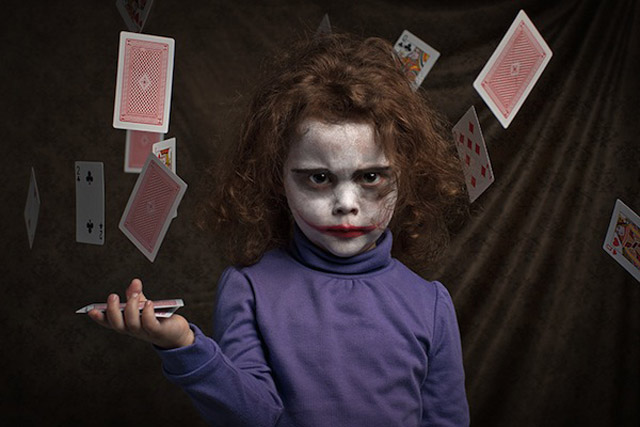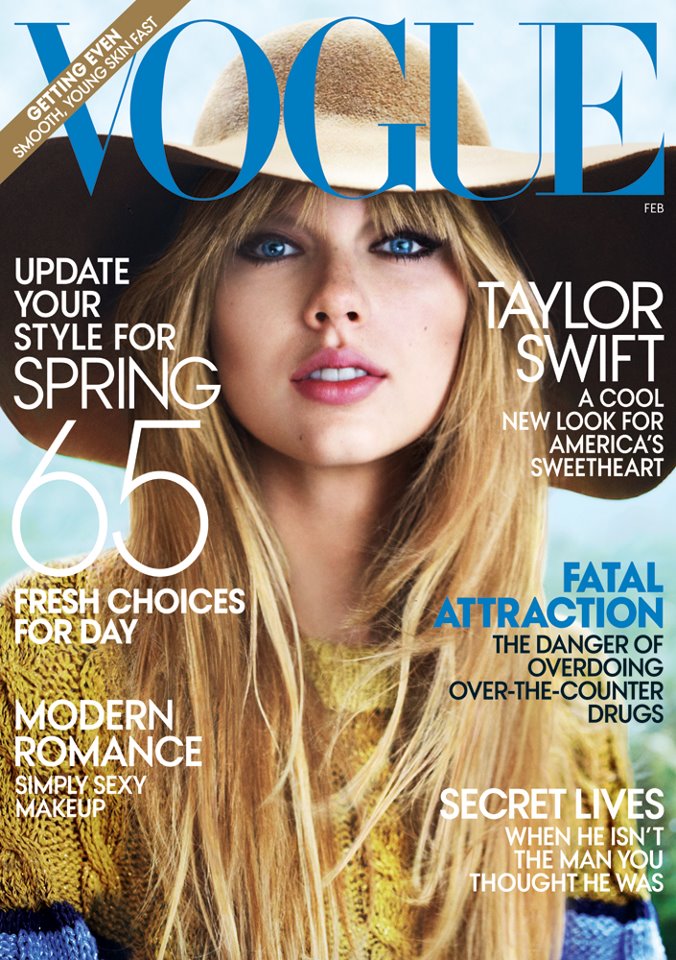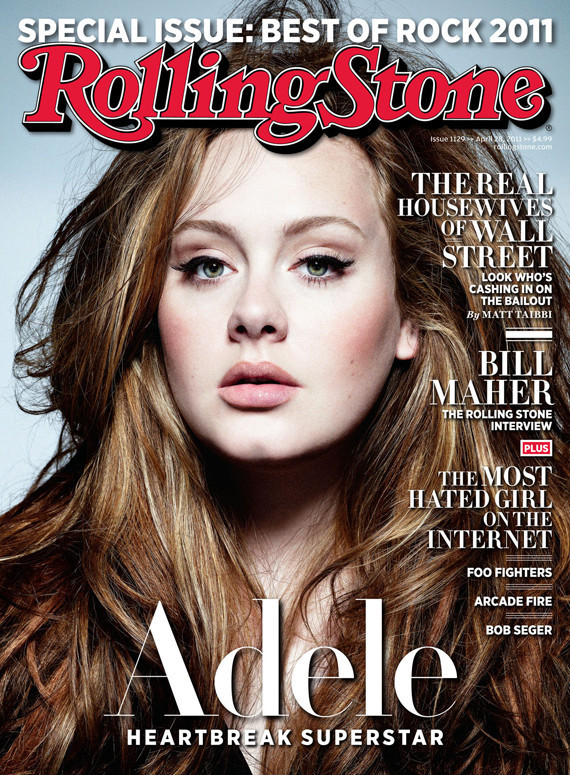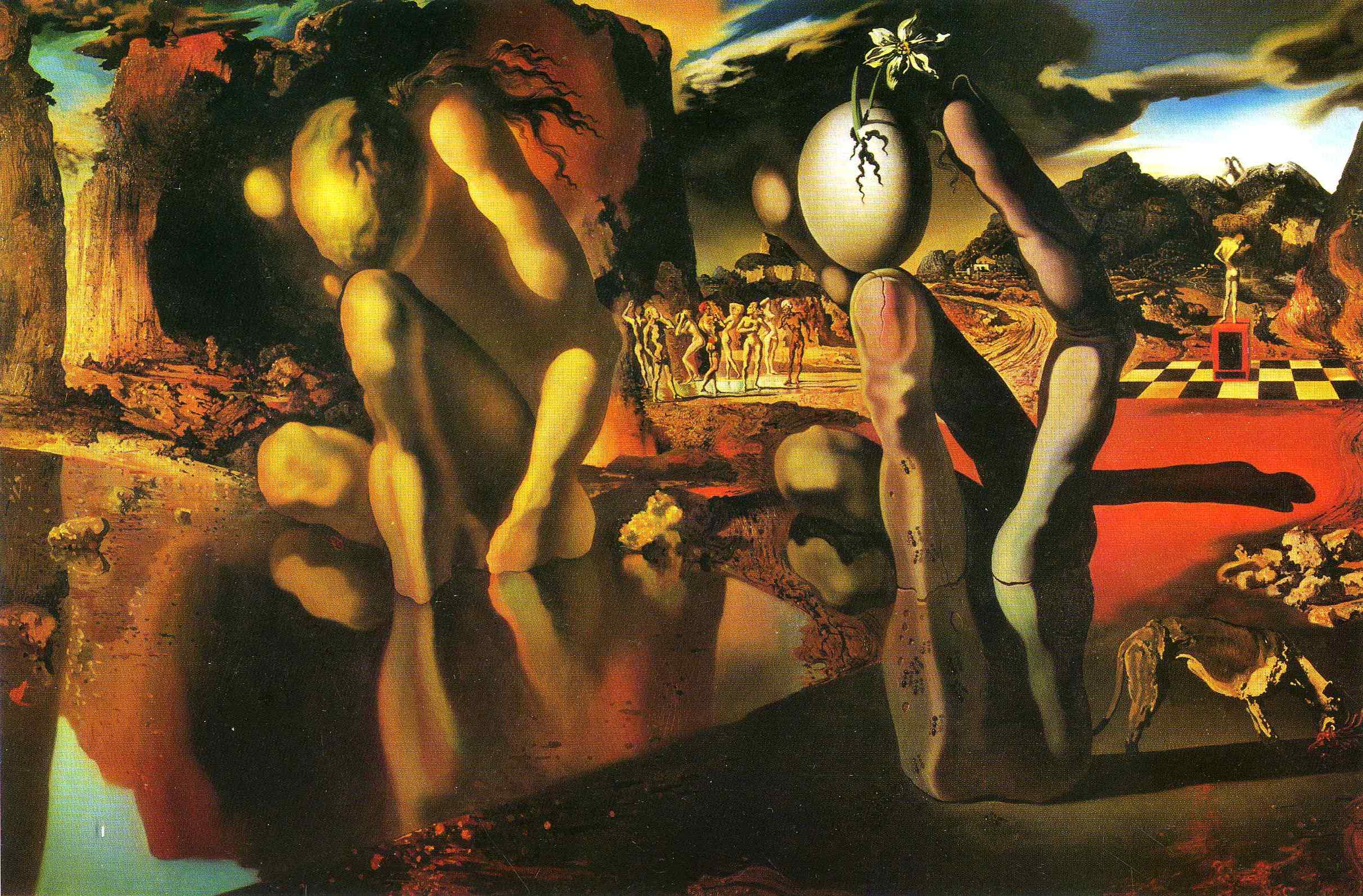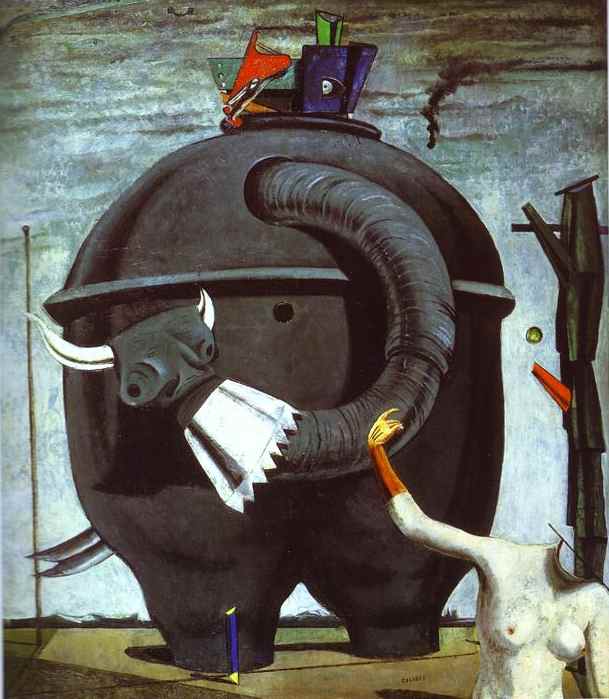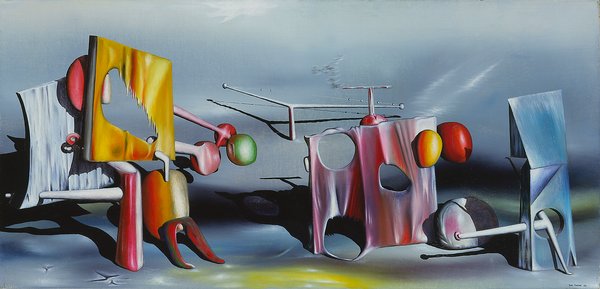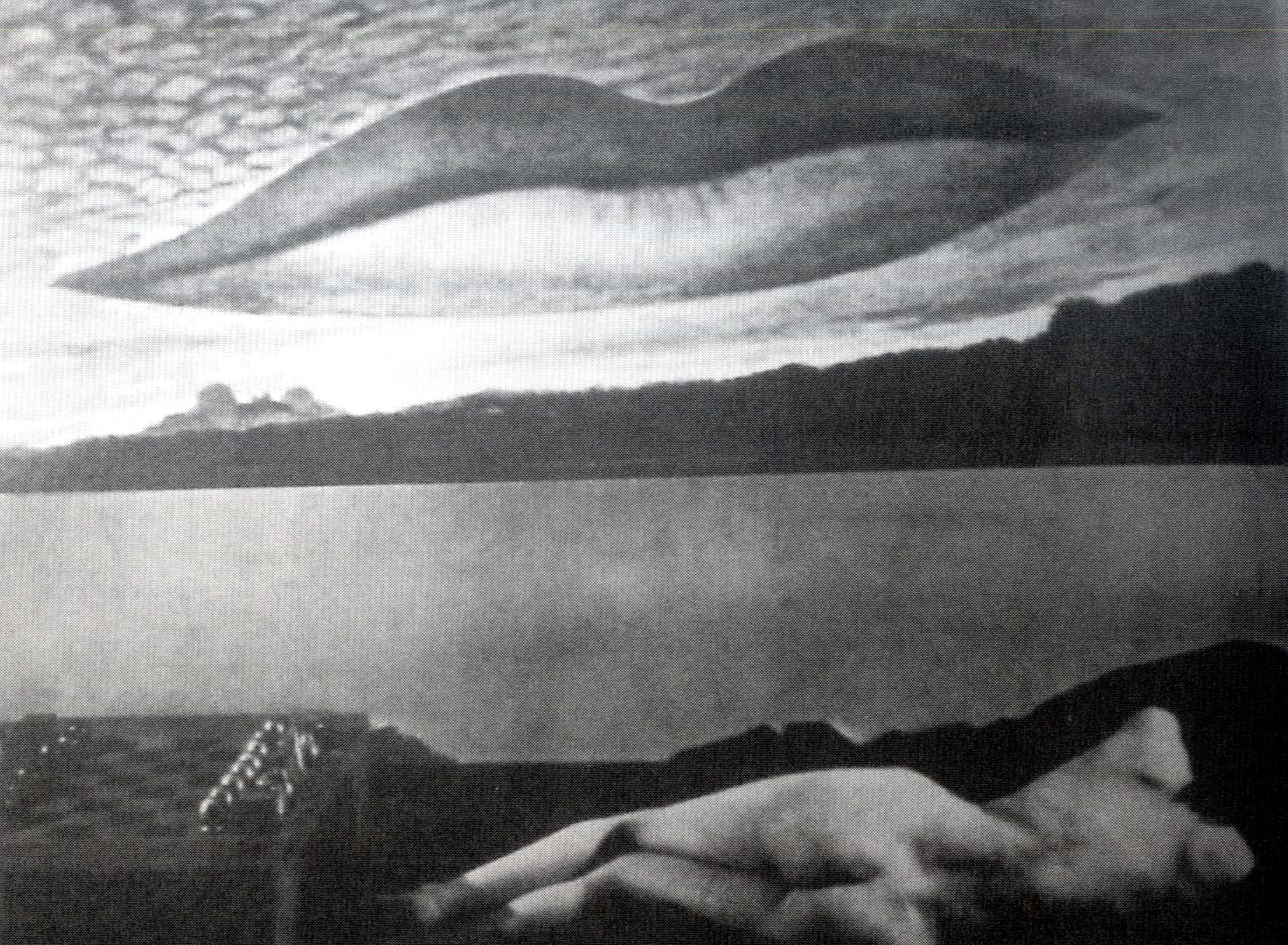Tuesday, June 2, 2015
Monday, May 18, 2015
Tuesday, April 28, 2015
Project Ten - Magazine Mock Up
I chose to create a travel magazine called Travello. I took photos from my travels in Spain last year, focusing Travello's main article on multiple cities that I visited. I created a "cover" picture for each city, as well as profiled a few different aspects of them. I used the same font from the cover page on the "cover" pages of the city articles as well to create a sense of continuity and similarity - even though it is online, it is still one magazine. Overall, I am happy with the way the online magazine turned out. My favorite part of making it was creating the advertisements, as well as the pages with multiple photos. I enjoyed being able to be creative with the ads, both in font and content. I did not know how to create a page with multiple photos before and I had fun laying the pictures out in the order that I wanted as well as titling them differently. Click the link below to view the final product!
Sunday, April 12, 2015
Project Nine - Two Portraits
Fine Art Portraiture
For my semester one final, I chose to emulate a self portrait of an older teenage girl. When thinking about fine art portraiture, I thought that my unit final method would work very well to convey the emotion that I was able to capture in the emulation. I used the same model and the same set up while shooting. However, I chose to put more emotion into the photo. By having the model show her bare shoulders while mimicking the Rosie the Riveter stance, she demonstrates a balance of beauty, while demanding respect. I chose to edit with a daguerreotype finish because it added a timeless effect to the image. I am very happy with the intimidating final outcome of the photograph.
For my second fine art portrait, I decided to use a natural model. In my first portrait, I staged it much more and used a message that I chose to convey. In this second one, I used my sister again but I chose to use a setting that represented her. She really loves soccer, so I decided to show her in a strong stance yet it one that was more reflective of her. This image was different than the one I was going for. I knew that I wanted natural lighting and that I wanted her in her soccer gear, but I initially but her against a brick wall. The brick wall didn't fit well with the message, so this final shot was in front of a dark door. I like how the light goes from bright to dark in her face, yet how there is a light wall to juxtapose the light side of her face. I am pleased with the final outcome of the photograph.
For my second fine art portrait, I decided to use a natural model. In my first portrait, I staged it much more and used a message that I chose to convey. In this second one, I used my sister again but I chose to use a setting that represented her. She really loves soccer, so I decided to show her in a strong stance yet it one that was more reflective of her. This image was different than the one I was going for. I knew that I wanted natural lighting and that I wanted her in her soccer gear, but I initially but her against a brick wall. The brick wall didn't fit well with the message, so this final shot was in front of a dark door. I like how the light goes from bright to dark in her face, yet how there is a light wall to juxtapose the light side of her face. I am pleased with the final outcome of the photograph.
Commercial Portraiture
For the commercial portraits, I knew that I wanted to make a sport magazine. I took my sister out to the park to run her through a series of drills to create a calculated yet natural stance (such as running or kicking the ball). This final image that I chose to use was the first picture from the entire shoot. I caught her tying her shoe and then told her to look up at me into the sunlight with a serious face. I am happy that my lighting worked out - I thought that the fading daylight might overexpose the image, but it worked out in my favor. I like the color of the writing on the magazine as well, I think that it works well with the bright color of the grass, yet stands out against the dark of my sister's hair and her outfit.
Here is another possible magazine cover. This one would work well because I left space for the title above of her head. As with the other images, her face is serious so as to convey a demanding and powerful message. I think that all of my photos are a bit "monotone" in the facial expression - they are all quite serious. This wasn't intended: it just so happened that all the images I liked and chose to edit had a serious expression. In the next project, I would like to experiment more with different types of facial expressions.
Upon further reflection, I decided to put one more possible magazine cover on my blog. In this photo, the model is smiling, a departure from my previous images! I edited this with high contrast, as with the image before this one, because I have seen many sports covers in particular that use this type of edit.
Tuesday, April 7, 2015
Portrait Introduction
Fine Art Portraits
Andrea Hübner
Bill Gekas
Moritz Aust
Commercial Portrait - Magazine Cover
Both the fine art and commercial portraits are aesthetically appealing. Each is well thought out in terms of what the photographer wants to convey to the audience. The images are well developed and thoroughly convey an emotion.
There are more differences than similarities. The fine art portrait is more aligned with what the photographer wants to convey. They are not impacted by having to sell magazines. The fine art portraits are carefully designed to demonstrate a specific mood. The commercial portraits are more "spur of the moment." Their poses are not intricately placed as the fine are ones are. There is thought as to what the final look should be, but the facial expression is captured in a moment. The commercial photos are not as "deep" as the fine art ones are: they are subject to public appeal, which can limit a photographer's creative opinion.
Thursday, March 19, 2015
Project Seven - Surrealism and Photomontage
This first surrealism picture is the imaginative, abstract art that is commonly found in surrealism art and images. I chose to use a flower as the sun and hands as birds because they represented the real life objects well. I additionally put in a couple of people who are flying away on a bouquet of flowers to add to the strange abstraction of the photo. If I had this photo to do over again, I would do something differently with the background. I like the mountain image, but I think a posterizing effect would work well with the rest of the photograph.
This second image is a more "realistic" form of surrealism. I was inspired by the artists who put people in jars, particularly one person who put a boy sitting on the edge of the jar fishing into it. I liked the jar because it gave a sense of scale to the image. I put three people in the image playing in "snow," which is actually cherry blossom petals and flowers. When the petals fall from the trees in springtime, it always looks like snow to me, and that's how the I the inspiration to create this image. The petals are from five different photos and are repeated over one hundred times (total) in order to create the "snow storm" effect. I am happy with the final outcome of this photograph.
Tuesday, March 17, 2015
Surrealism Introduction
Surrealism
Historically Prominent Surrealist Artists
Metamorphosis of Narcissus
Salvador Dalí
The Elephant Celebes
Max Ernst
Reply to Red
Yves Tanguy
Surrealism is a type of art in which the artist creates unrealistic images. In many cases, the images appear funny or humorous because they are so strange. Images can also appear dreamlike, rather than ridiculous. Surrealism began in the 1920s, created to "release the unbridled imagination of the subconscious." Surrealism mainly dominated artists who used paint or pencil as their medium, but today surrealism extends into photography (see below for surrealist photographers).
Surrealist Photographers
The Mind's Eye
Maurice Tabard
Untitled
Man Ray
Patti Shambles
Thomas Barbey
Kylli Sparre
Tuesday, March 3, 2015
Project Seven - Alternative Processes through Digital Means
After
Cyanotypes were mostly used with still-life subjects. For this photograph, I used a photo of tree bark that I had taken for a previous project. I used deep depth of field while shooting this image, as I felt that the texture of the bark would stand out more. I like how the movement of the bark shows through the blue hues of cyanotype image.
Before
After
In all of my cyanotype pictures, I chose to use a darker blue. I wanted to give my own spin on the cyanotyope pictures. I also felt that the bright blue didn't work with my images as well. The bright blue is not as aesthetically pleasing to me as the navy blue is. This is a picture of Mt. Adams. In addition to darkening the foothills below it, I gave the image some grain to make it look older. I felt that the grain effect paired well with the cyanotype finish.
Before
After
Historically. cyanotypes were commonly used with still life subjects. As infant mortality rate was high, families would choose to immortalize the dead by photographing them. I wanted to emulate this practice. I used a picture of my sister that I flipped so that she would be lying down. I edited the image to make her eyes look darker and give the photo a more deathly appearance. Even though the subject is dark, I am happy with the final outcome of the photo.
_________________________________________________________________________________
Daguerreotype
Before
Daguerreotypes are typically portraits, so I used a picture that I had used for my emulation final. I applied a subtle texture while editing, along with a golden-brown tint. I also wanted to implement the gold framing technique which daguerreotypes were known for. I think the frame around the photo might not fit the mood, but I wanted to see what it would look like nonetheless.
Before
After
For this second daguerreotype, I wanted to leave the frame off. I tried to give the edges a rougher look, but nothing looked right so I left it off. When editing, I wanted to give this image a more metal-like effect. I made the light part of the photo more apparent and gave it a more silvery color. I also painted over the texture I applied. The print gave the photo a distressed metal look. I came at this photo from a different angle than the first, but I think that I like my first edit more.
_________________________________________________________________________________
Gum Bichromates
Before
After
The final alternative process that I chose to try is gum bichromate. Gum bichromate photography was developed in the 1800s and typically concerned images such as landscapes, but many different subjects can be found. There is no one person who is responsible for the development of the gum bichromate process. This type of photography involves layering different colors upon one another. This is a photograph of my sister, utilizing slow shutter speed. This was my first attempt at a gum bichromate. I love the texture in the photograph, but if I was to edit this photo again, I would soften the colors, particularly the blue.
Before
After
I liked this gum bichromate edit better than the first one. This second image still has vibrant colors, but is a bit more subdued and more painterly. Gum bichromate photographs typically have watercolor-like effects. I am very happy with how this turned out. I layered bright yellow, indigo and magenta in this image. This is an image of Christmas tree lights that I blurred by used a slow shutter speed.
Friday, February 27, 2015
Daguerreotype and Cyanotype Photography
Daguerreotype
Daguerreotype photography was invented by Louis Daguerre in 1839. In order to produce daguerreotype photographs, a photographer would polish a piece of silver-plated copper and make it look like a piece of mirror. A photographer would then treat it with a chemical to make it light sensitive and finally take a photograph, exposing the plate to the light as long as need be. Daguerreotype photographs characteristically have a metallic sheen to them are are black-and-white or in sepia tones. The photographs may also be framed by ornate gold borders.
Contemporary daguerreotype photographer: John Hurlock
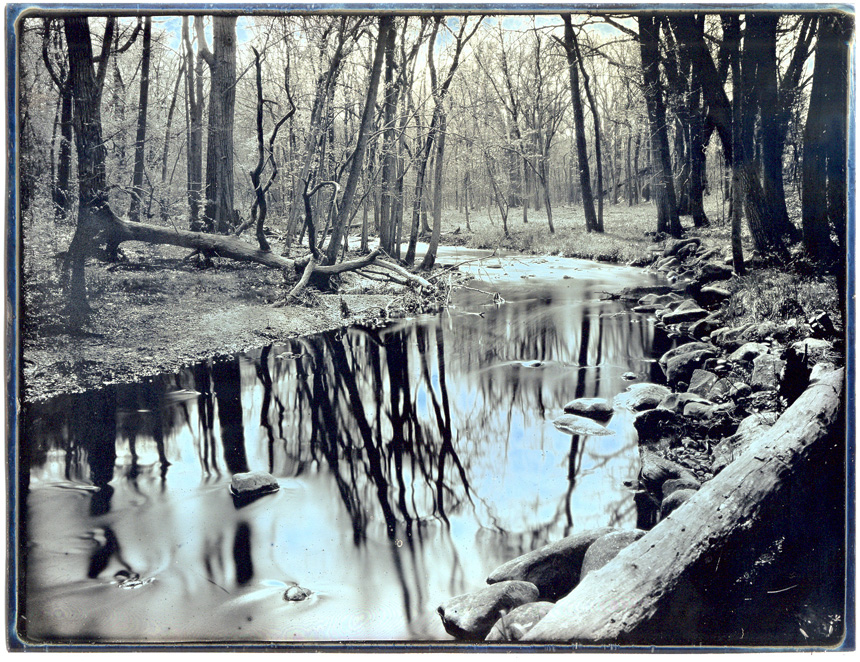
Historical daguerreotype photographer: Robert Cornelius

Daguerreotype photography was invented by Louis Daguerre in 1839. In order to produce daguerreotype photographs, a photographer would polish a piece of silver-plated copper and make it look like a piece of mirror. A photographer would then treat it with a chemical to make it light sensitive and finally take a photograph, exposing the plate to the light as long as need be. Daguerreotype photographs characteristically have a metallic sheen to them are are black-and-white or in sepia tones. The photographs may also be framed by ornate gold borders.
Contemporary daguerreotype photographer: John Hurlock

Historical daguerreotype photographer: Robert Cornelius

Cyanotype
Sir John Herschel invented the cyanotype process in 1842, but it was Anna Atkins who applied the method to photography. Before, it had just been used as a means to copy notes and diagrams into blueprints. The solution of a cyanotype photograph was painted onto specific paper and then exposed to the sun. Whatever elements may be lain atop of the paper, typically plants, will appear in an x-ray looking pattern. Cyanotypes are known for their dramatically blue hues.
Contemporary cyanotype photographer: Egill Ibsen

Historical cyanotype photographer: Anna Atkins
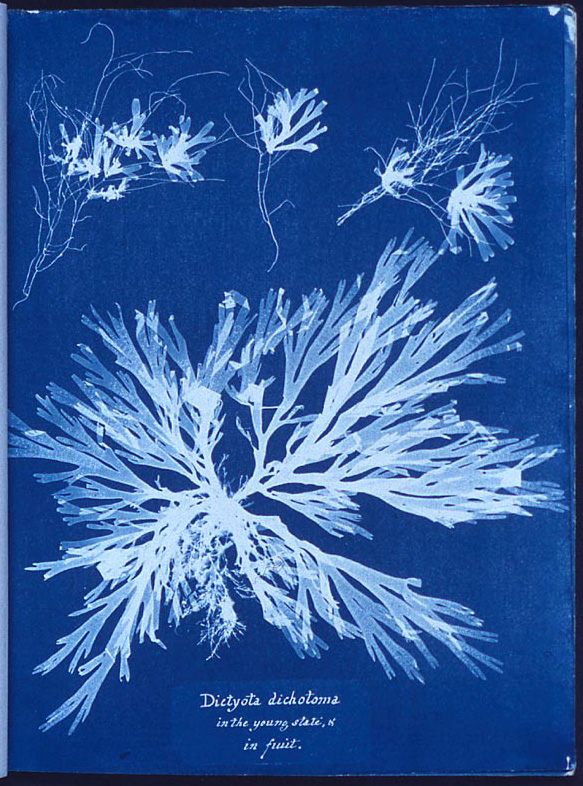
Sir John Herschel invented the cyanotype process in 1842, but it was Anna Atkins who applied the method to photography. Before, it had just been used as a means to copy notes and diagrams into blueprints. The solution of a cyanotype photograph was painted onto specific paper and then exposed to the sun. Whatever elements may be lain atop of the paper, typically plants, will appear in an x-ray looking pattern. Cyanotypes are known for their dramatically blue hues.
Contemporary cyanotype photographer: Egill Ibsen

Historical cyanotype photographer: Anna Atkins

Tuesday, February 17, 2015
Project Six - Multiple Image Techniques
HDR Images
I find the HDR effect on this photograph very interesting. To me, it looks like something out of a sci-fi fairytale. The textures appear much harsher in the image, and you can't quite tell if it's real or not. Though very different than any edit I've ever given an image, I liked how this turned out.
Panorama
This image was created using a different style of HDR. The first HDR photograph was given a harsh, unrealistic edit. This second image was created using different exposures of the moss. By putting them together, they created a photograph which reflected the accurate colors of the moss. I like the rich greens that the final photograph shows.
Panorama
This panorama is of the track at Jackson Middle School. Though I captured the track completely, I had trouble while editing. I could not completely make the image flow together. There are some areas where the exposure of the grass changes and where the track doesn't line up. I attempted to fix some of these issues while editing, but I couldn't get it completely.
Multiple Exposures
For this image, I took multiple images of a tree. I specifically wanted to take pictures of a tree because I wanted to see how the branches would look once layered upon one another. I chose to give this image an edit that I've never done before. I "inverted" the colors in Photoshop to give it this transparent effect. I like the chaos of the branches as well as the spooky mood the colors give off.
In order to create this photograph, I layered multiple images of hands. I had the hands create a shadow-puppet eagle shape because I thought that the wings (fingers) would appear as if they were moving. I had some trouble editing this at first, due to the dark background. However, I ended up only using four images which was better than the original idea I had, which helped with the editing issue. I am happy with the final edit and photographs that I chose to create this image.
Thursday, January 22, 2015
Tuesday, January 20, 2015
First Semester Emulation Final
The goal of this project was to emulate the work of a professional photographer. I chose to emulate a self portrait made by Beth Parnaby. In my emulation, I tried to use much of the same style and mood created in the photo while using a different edit. I feel very happy with the outcome of my final photograph.
Extra emulation - the first slide is my main emulation, but I loved this second emulation to show a different take on Parnaby's self-portrait. On this slide you will also find some extra information about the photographer.
Monday, January 12, 2015
Subscribe to:
Posts (Atom)







